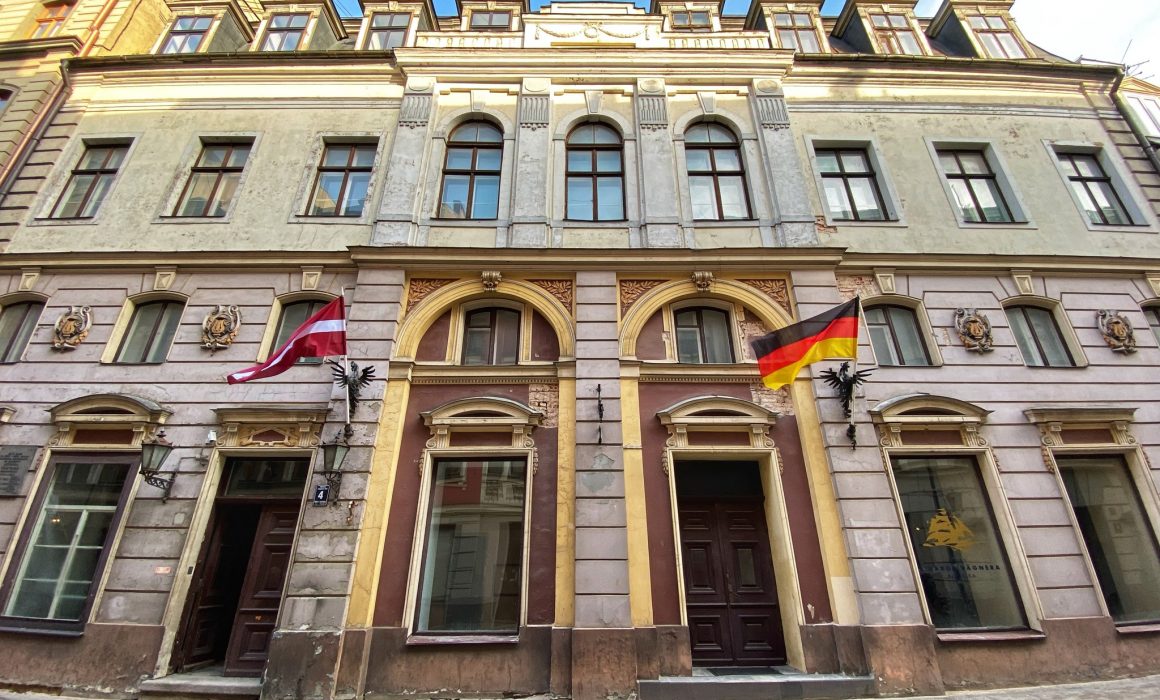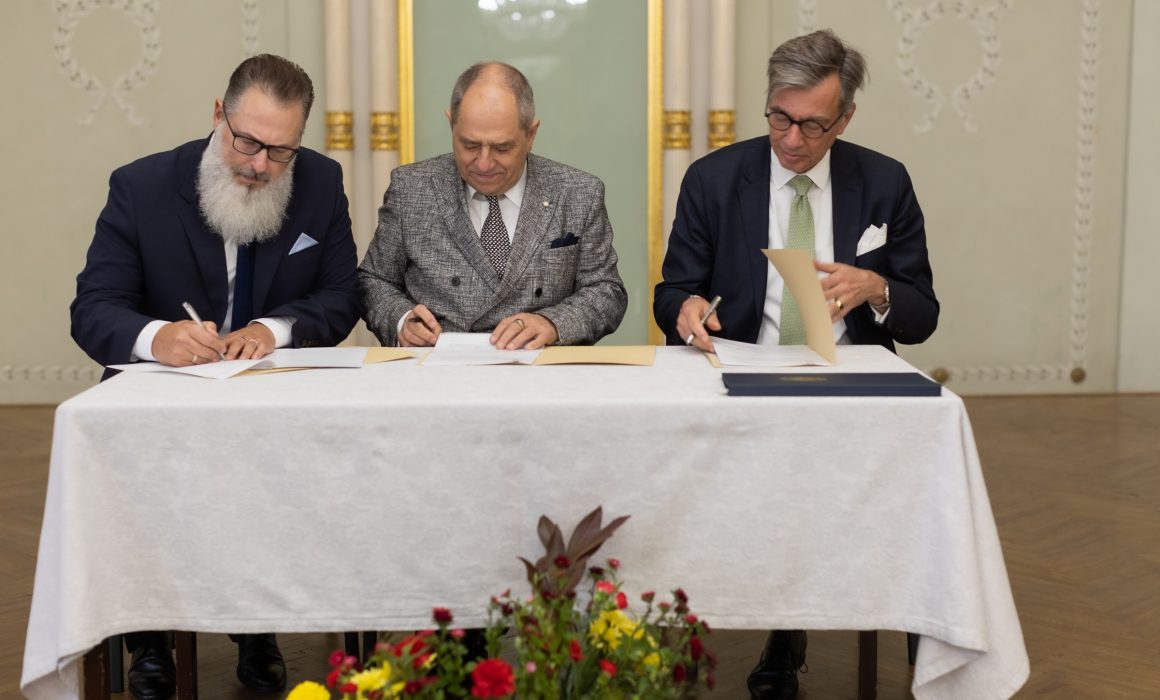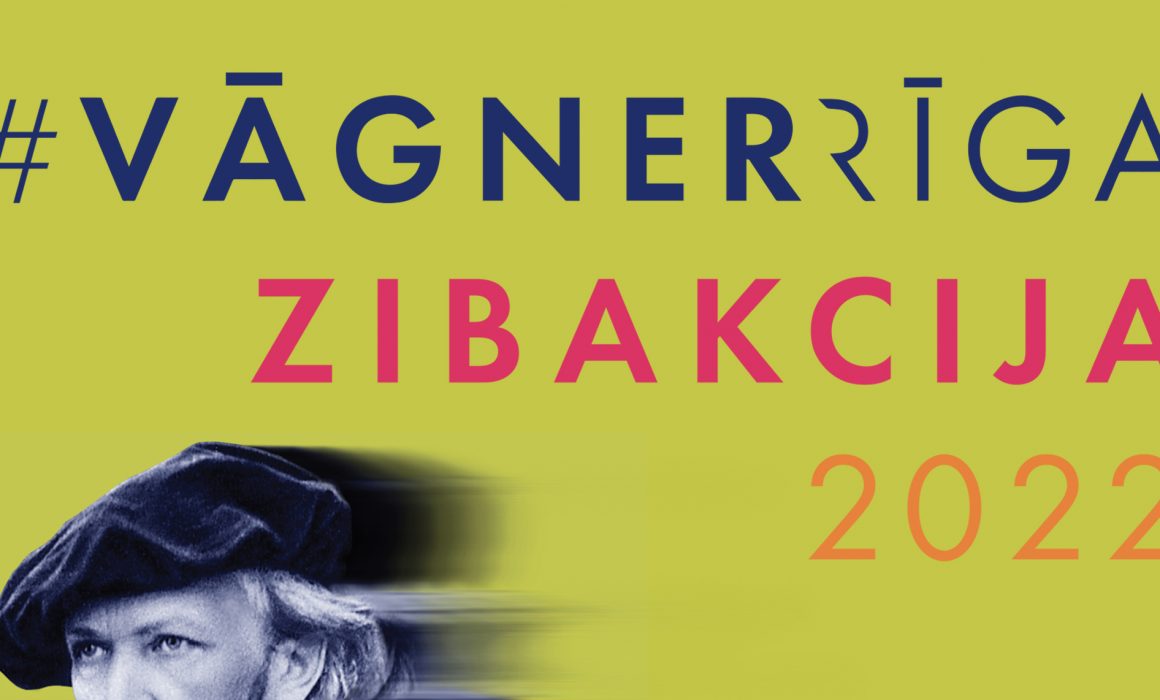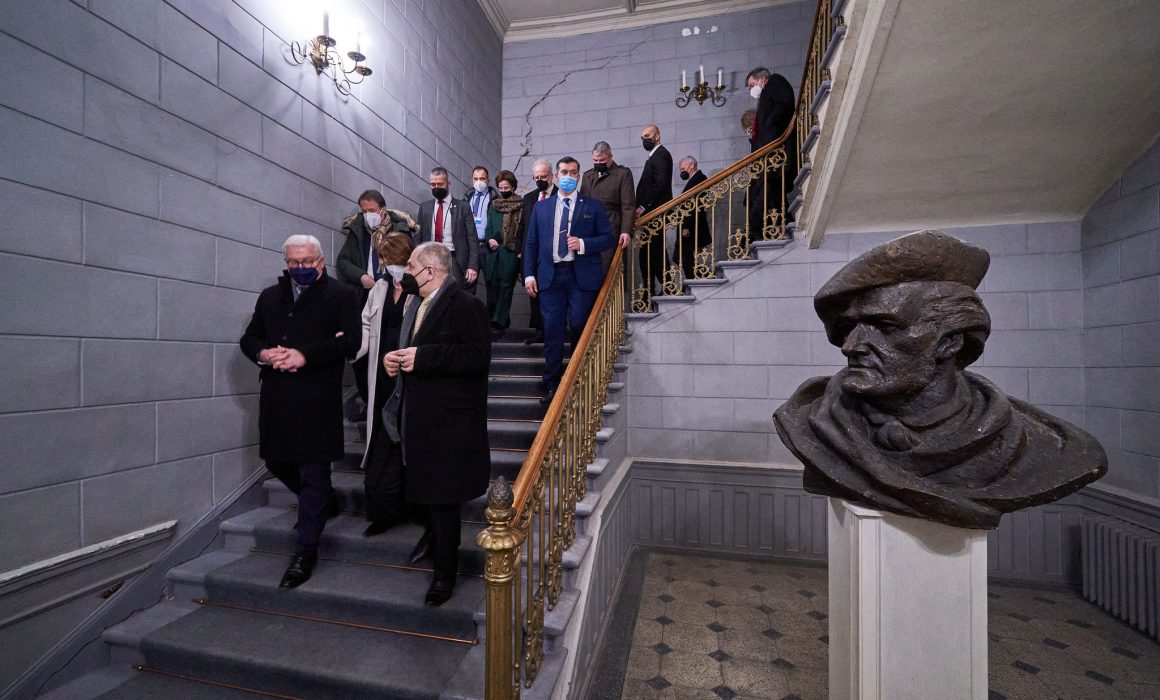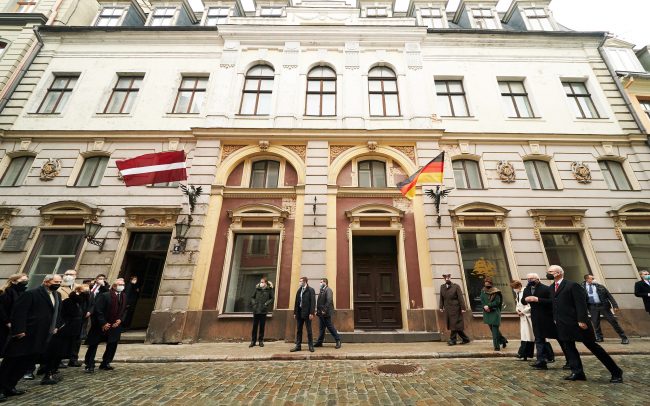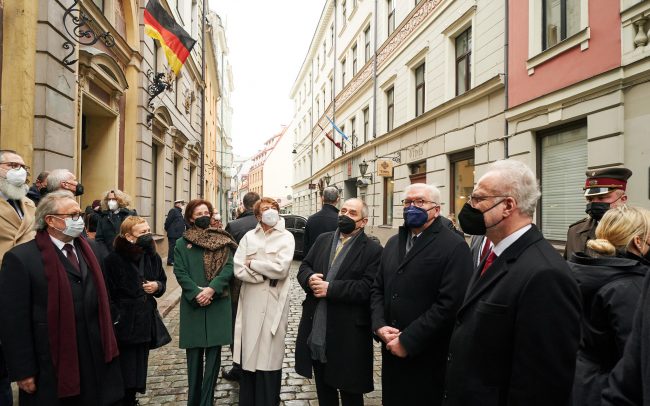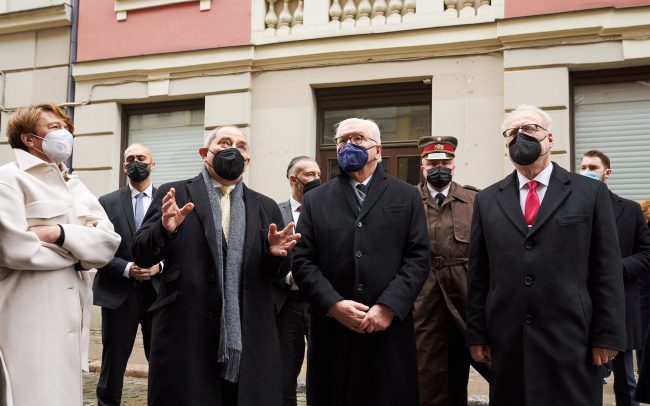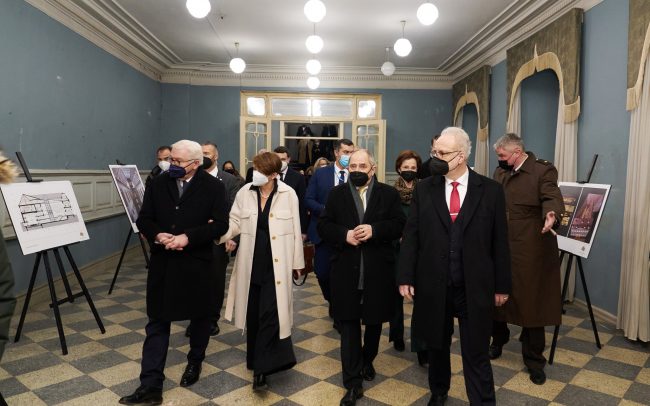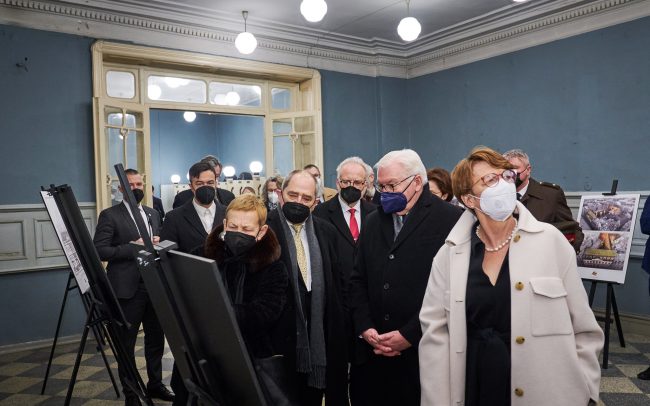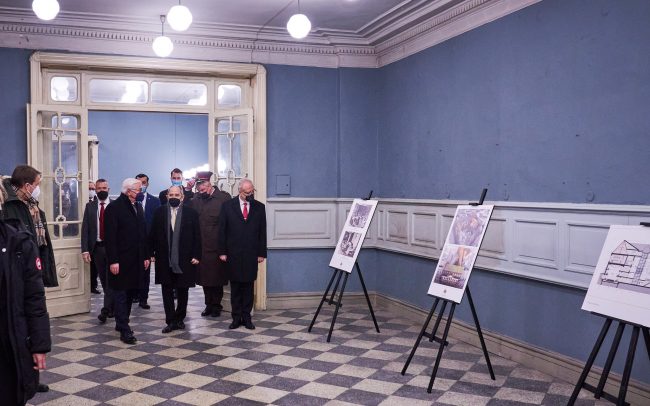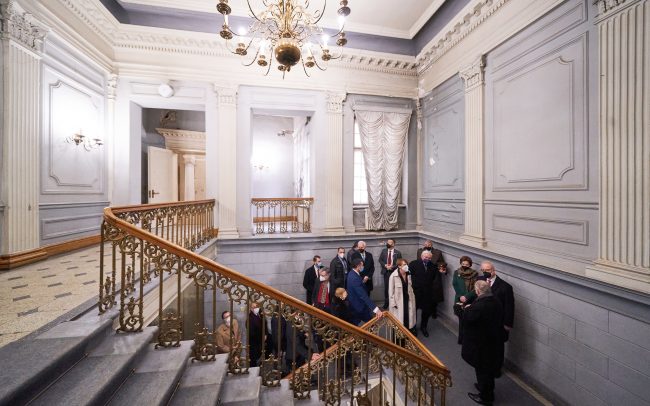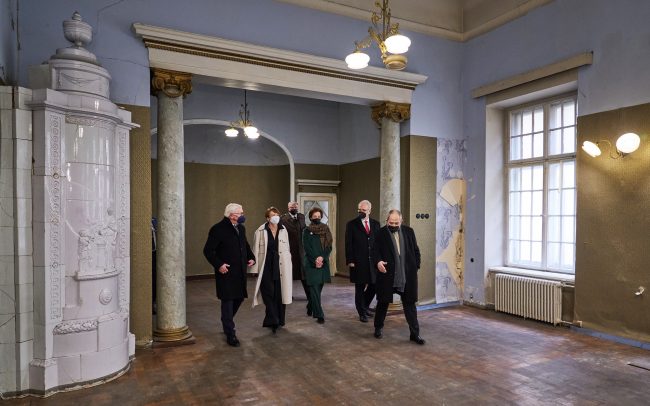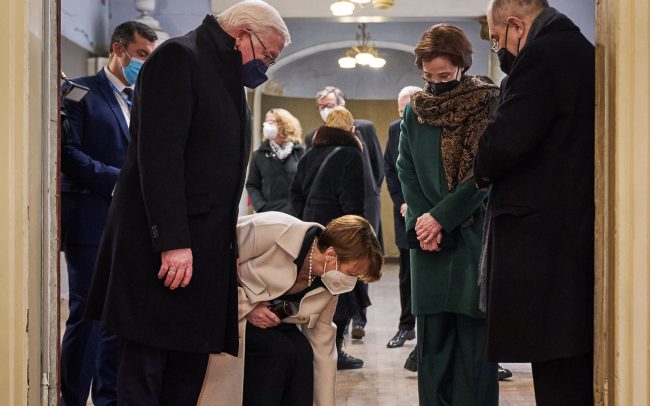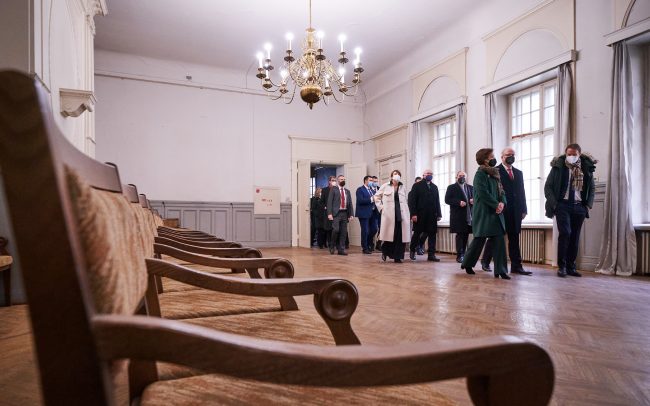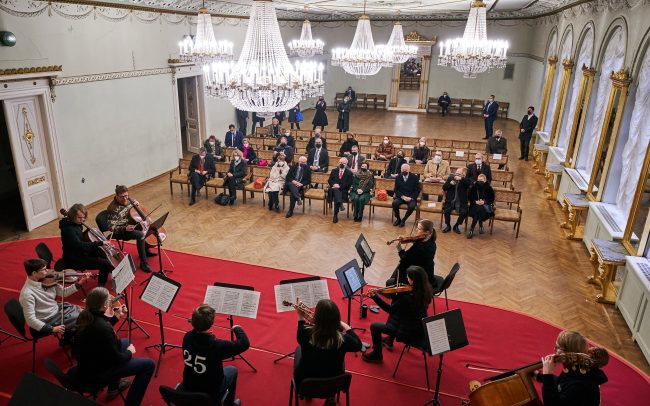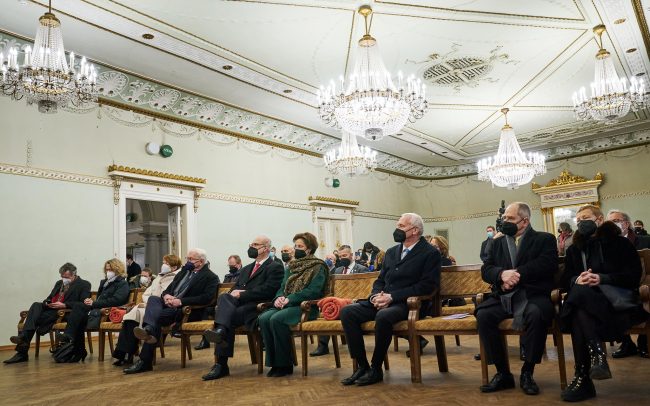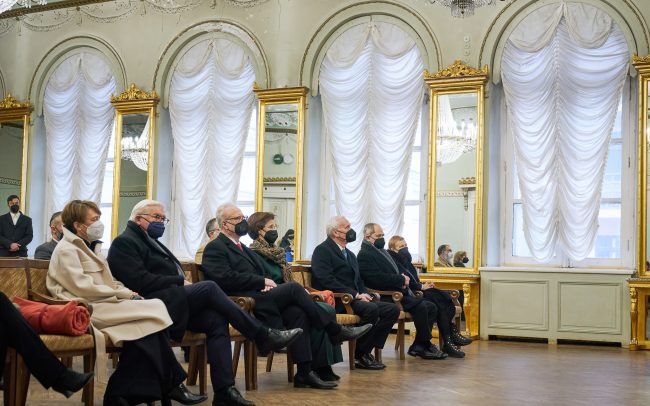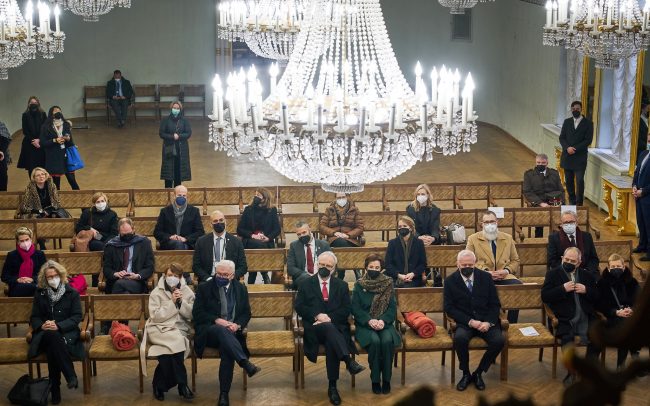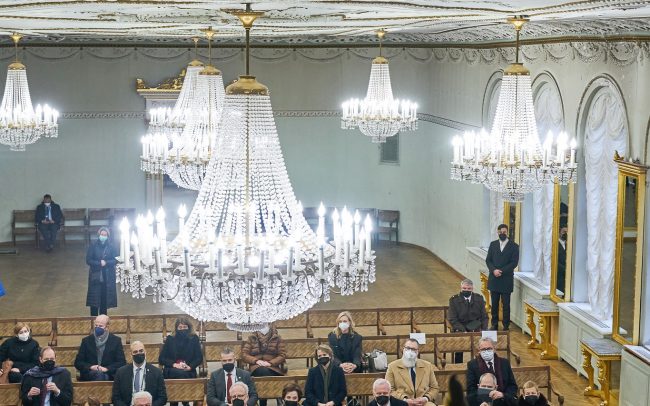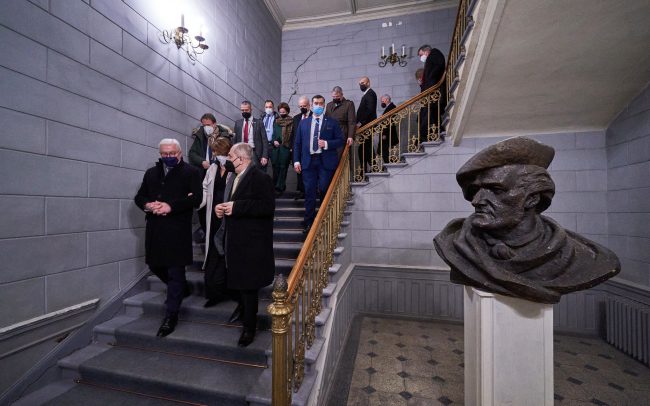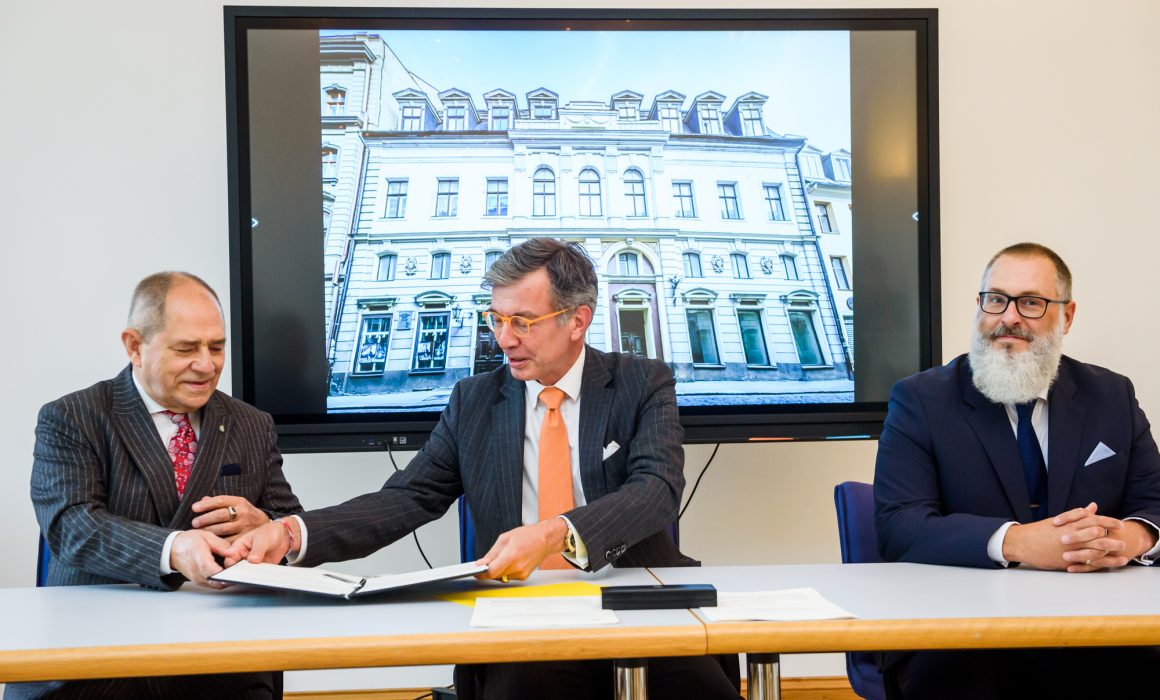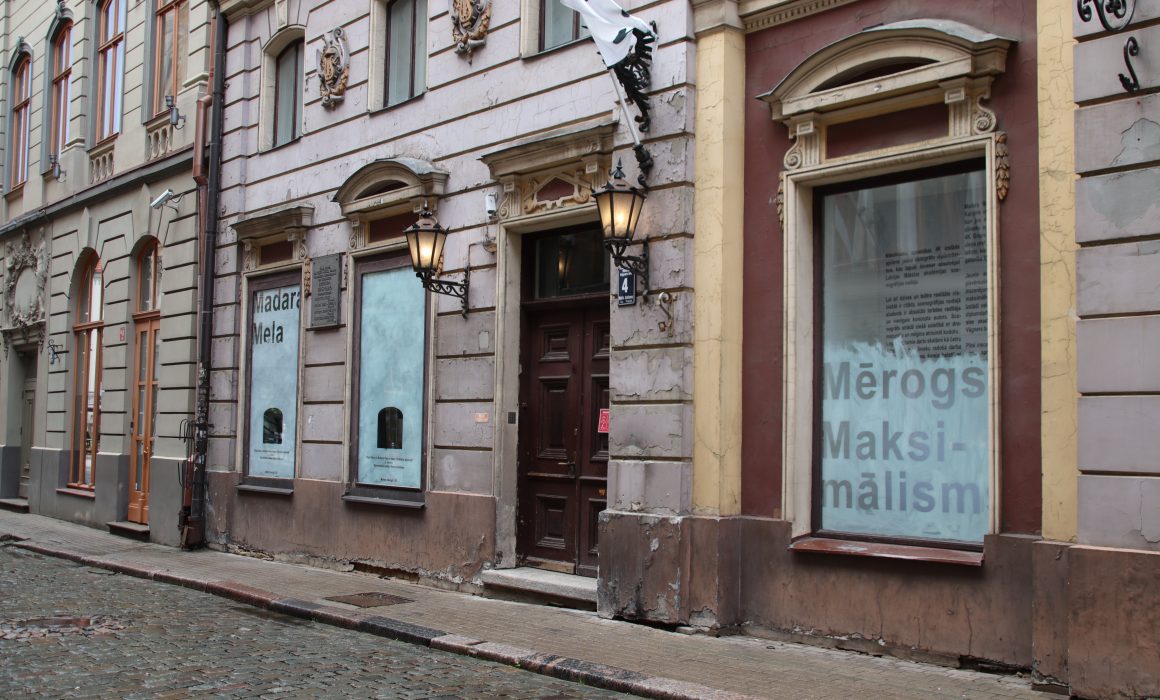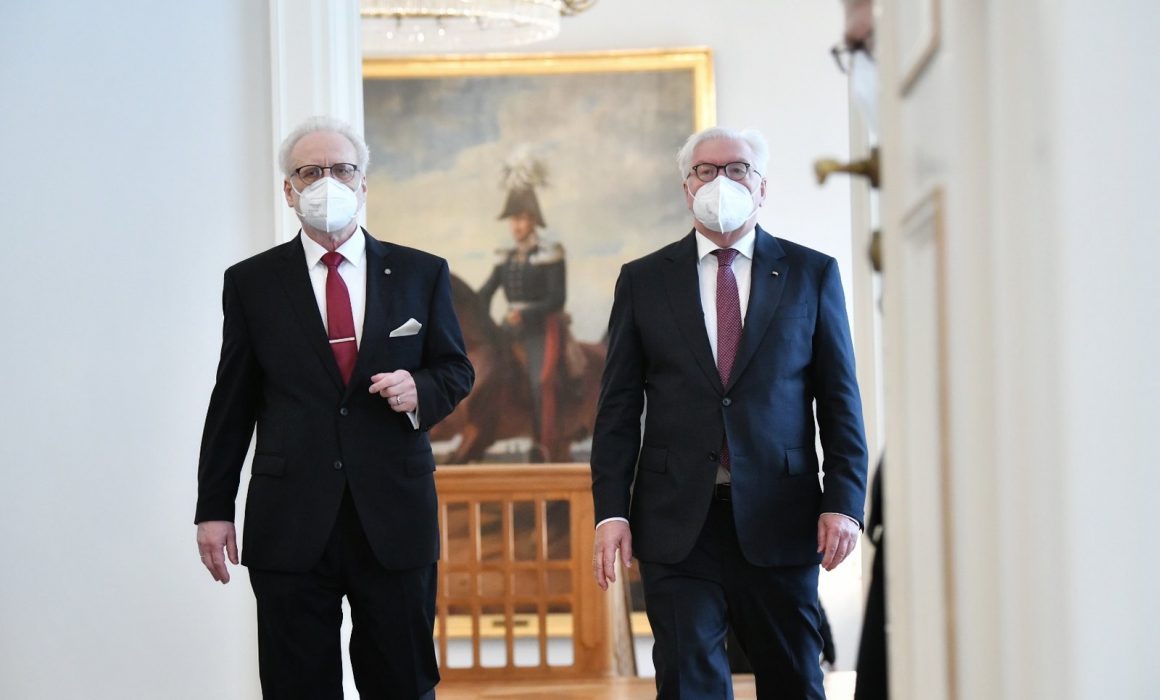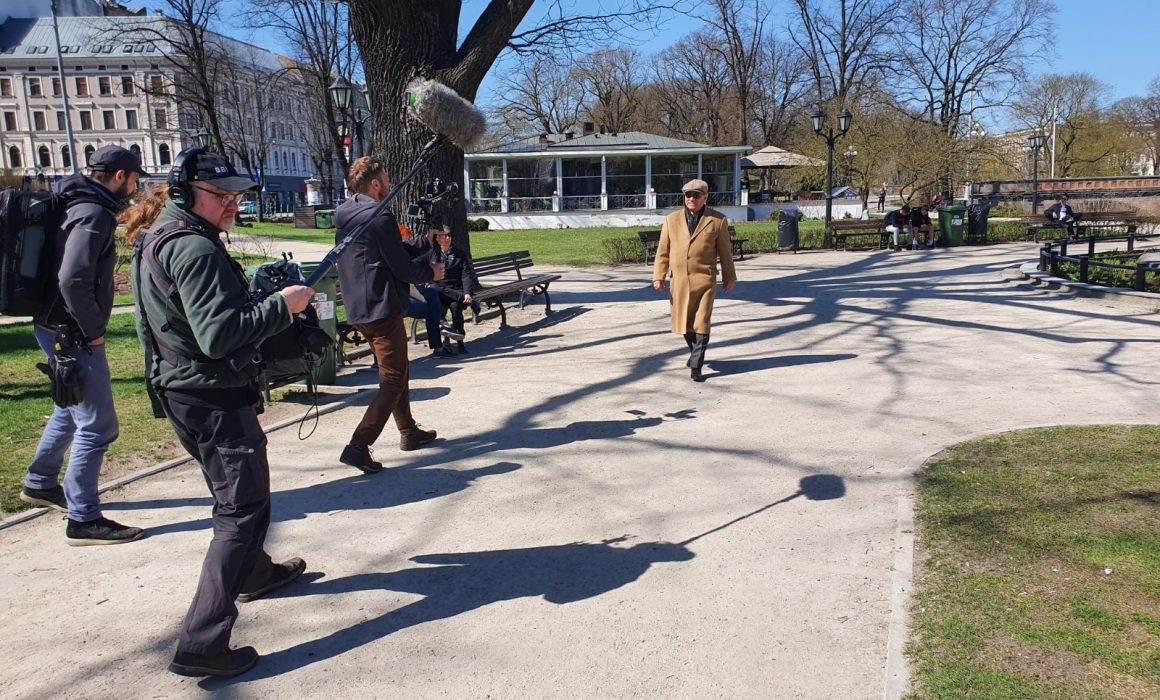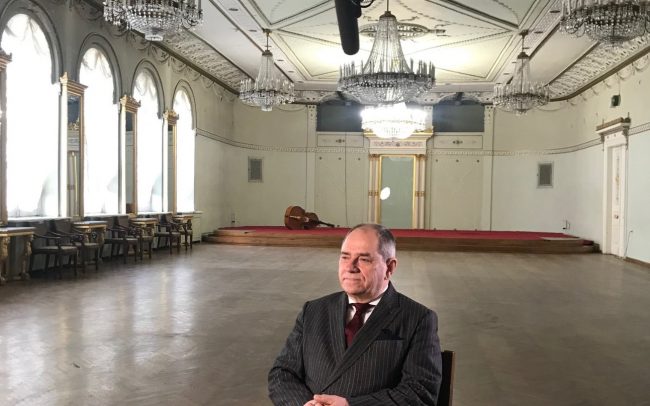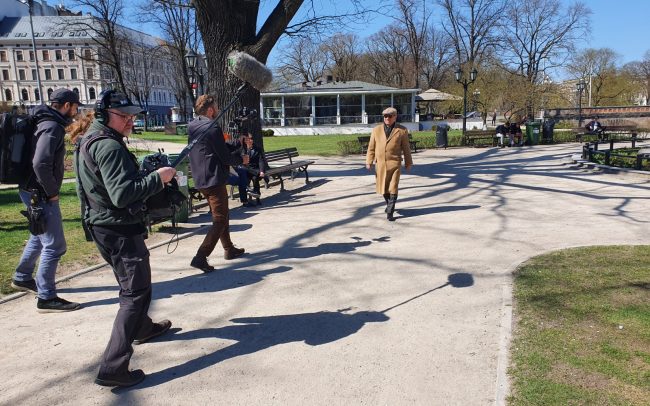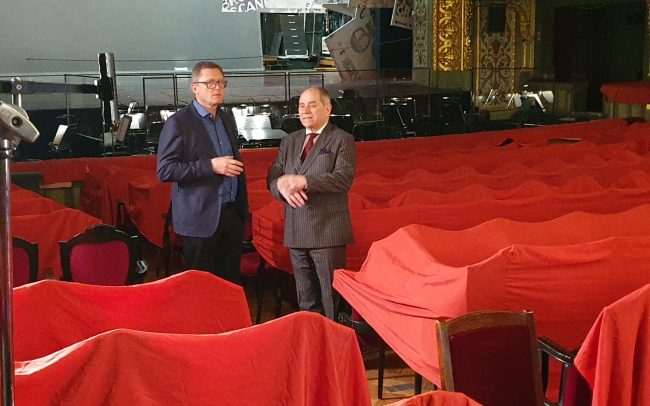Dialogue of Valkyries: Dance performances at the Wagner House
On Friday, 25 November, at 19.00, Riga Wagner House, Riharda Wagner iela 4, will host the performance “Dialogue of Valkyries” by artists Meija Sarmīte Kalniņa and Simona Orinska, in which the audience will have the opportunity to experience the primal, vital, bodily unconscious aspects of art, reflecting on the relationship between feminine energy, loss and authority.
One of the conversations in the Valkyrie Dialogue performance will be The Presence of Absence, created by Maya Sarmīte Kalniņa – a visually spectacular, baroque journey into the territory of loss, where individual and collective consciousness merge in a shared ritual action. The conversation continues with Simona Orinska’s performance There She Goes My Beautiful World, which depicts the progression from external authority to internal authority, a complex multi-stage process in the development of any individual, society and even country. The performance will also feature sound artist Arvis Kantiševs and singer Anta Eņģele. The performance will also feature a Lielvārde belt woven by Ligita Embrekte, a crown created by Brigita Stroda and a costume designed by Inese Gibeiko.
Both artists echo Wagner’s notion of total theatre in their performances with operatic baroqueness and drama, a rich synthesis and interplay of performing arts elements using sound, music, body, voice and visuals. The two works are also united by the aesthetics of butoh art. In addition, the unifying element of the performance is the “Valkyries” – divine beings who accompany the souls of the heroes who died in the war to the underworld and are also their favourites. The performance will seek a balance between these different forces, which in today’s situation in our lives are particularly confronted with danger and uncertainty, both on a personal and on a wider scale.
The performance The Presence of Presence, created by Maya Sarmīte Kalniņa, premiered at the International Festival of Performance Art Starptelpa in June 2022. It was created in collaboration with a group of Butō performance artists. Simona Orinska’s solo premiere “There She Comes, My Wonderful World” took place in New York at Grace Gallery in September 2022, as part of the Baltic Art Festival, together with a group of artists from the Latvian Centre for Performance Art.
It is significant that the performance will take place at the Wagner House in Riga, as the audience will have the opportunity to see inside the building before the reconstruction and restoration work begins, which is planned for the middle of next year. Admission from 18.00, with a café on site.
Tickets: https://ticketshop.lv/en/events/4613
Simona Orinska (left) and Sarmīte Meja Kalniņa, publicity photo.
Contract signed for 5 000 000 € for the renovation of the Wagner Theatre in Riga
Already in late 2020, it was reported that the German Bundestag had approved €5.2 million for the restoration of the Wagner Theatre. Last August, an agreement was signed between the German Embassy and the Richard Wagner Society of Riga for the first €200 000. These funds were used to prepare the project’s sketch phase. The project has now developed significantly and on 6 October the agreement for the remaining approved funding of 5 million was signed in the Wagner Hall.
The next phase of the Wagner Hall renovation project – the preparation of the technical design – will start this year. The German government’s co-financing of €5 million will be used over the next four years (2022-2025) and is intended to co-finance the preparation of the technical design and the first phase of construction. The reconstruction and restoration work is scheduled to start in mid-2023, with the opening of the renovated Wagner Theatre planned for 2026.
On 6 October, not only the financing agreement was signed, but also a letter of intent on cooperation in the implementation of the Riga Wagner Theatre restoration project between the Ministry of Culture of the Republic of Latvia, the Ministry of Foreign Affairs of the Federal Republic of Germany and the Riga Richard Wagner Society. At the ceremony, the contract was signed by the German Ambassador to Latvia Christian Heldt and the Board of the Riga Richard Wagner Society, while the letter of intent on cooperation in the implementation of the Wagner Theatre restoration project was also signed by the Minister of Culture of the Republic of Latvia Nauris Puntulis.
The vision of the project “Renaissance of the Wagner Theatre in Riga” is to create a European beacon of culture in Riga. Over the next few years, the unique 5000 square metre building ensemble in Old Riga will be renovated and given a new lease of life. The importance of the project is also confirmed by the patrons of the Wagner House restoration project – Egils Levits, President of Latvia, Frank-Walter Steinmeier, President of the Federal Republic of Germany, and Eva Wagner-Pasquier, great-granddaughter of Richard Wagner and former artistic director of the Bayreuth Festival.
The restoration of the Wagner House will bring a number of significant benefits, not only in terms of the diversity and accessibility of cultural events for the people of Latvia, but also in terms of strengthening the image of Riga and Latvia as a cultural centre and the link with Richard Wagner, who was Kapellmeister at the House for two years (1837-1839). The project will not only renovate the building and the theatre hall, but also create masterclasses and a museum. The Wagner House will realise Wagner’s vision of “GesamtkunstWerk21” – an incubator for all art forms that will become an international centre for young artists worthy of the 21st century.
More information:
Signe Viška
Public Relations Manager, Assistant to the Chairman of the Board
signe.viska@vagneriga.lv
Riga Richard Wagner Society will celebrate Wagner’s 209th birthday
The Riga Richard Wagner Society invites you to celebrate Richard Wagner’s 209th birthday on Sunday, 22 May, starting at 16:00, by joining in a flash mob.
Every year, the Riga Richard Wagner Society (RRWS) has celebrated the birthday of the great German composer by organising a special flash mob to draw public attention to the building at 4 Wagner Street (formerly the First City Theatre of Riga) and its renovation project. This year is no exception: with Wagner’s best-known compositions playing from the windows of the building, everyone will have the opportunity to take a photo with Wagner himself and his companion, Robber a Newfoundland dog who was the composer’s companion during his time in Riga (1837-1839). Participants are invited to take a photo of themselves and their friends with Wagner and Robber and post it on social media with the hashtag #vagneriga.
On 22 May, the doors of Richards Wagner Street. 4 will be open to everyone, offering a unique opportunity to see inside the building where Richard Wagner himself once waved his conductor’s baton.
Since the first RRWS flash mob in 2017, when the future of the Wagner House was still unclear, significant steps have been taken: the former director of the Bayreuth Festival and Wagner’s great-granddaughter Eva Wagner-Pasquier, the President of Latvia Egils Levits and the German President Frank-Walter Steinmeier have become patrons of the renovation project. In October 2020, the building at 4 Wagner Street was transferred to the RRWS and at the end of the same year the German Bundestag approved the allocation of €5.2 million for the renovation of the Wagner House. A total of EUR 35 million is needed for this purpose. The renovation and reconstruction work is scheduled to start in the summer of 2023 and the renovated building is expected to open its doors as the Wagner Theatre of Riga in 2026.
Everyone is invited to support the revival of the Wagner House by donating in person on Sunday (a special donation box will be available) or by bank transfer at their convenience.
More information:
Signe Viška
Riga Richard Wagner Society
Public Relations Manager
signe.viska@vagneriga.lv
+371 22028087
The first contract for 200,000 euros for the renovation of the Wagner Theatre in Riga was signed
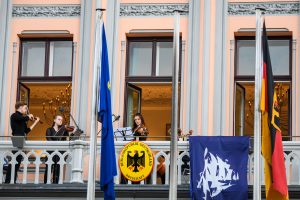
Foto: Gints Ivuškāns
The signing of the contract for the financing of the planning phase by the German government is an important step in the implementation of the “Renaissance of the Wagner Theatre in Riga” project – it means that the first tranche of the 200,000 euros for the restoration and renovation of the Wagner Theatre is available in the form of a grant. It will be invested in the development of the Wagner Theatre project to the next stage – the preparation and planning of the project to the sketch stage.
The vision of the Wagner Theatre Renaissance in Riga project is to create a beacon of European culture in Riga. Over a period of six years, the unique 5000 square metre building ensemble in Riga’s Old Town will be renovated and given a new lease of life. The importance of the project is also confirmed by the patrons of the Wagner Theatre – Latvian President Egils Levits, German President Frank-Walter Steinmeier and the great-granddaughter of Richard Wagner, Eva Wagner-Pasquier.
A total of 35 million euros will be needed for the restoration and revitalisation of the former first Riga theatre. The restoration of the Wagner Theatre will not only improve the diversity and accessibility of cultural events for the Latvian population, but also strengthen the image of Riga and Latvia as a cultural centre and the connection to Richard Wagner, who was Kapellmeister at the Wagner Theatre for two years (1837-1839). The project envisages not only the renovation of the building and the theatre hall, but also the establishment of master classes and a museum. The Wagner Theatre will realise Wagner’s vision of the “GesamtkunstWerk21” – an incubator for all art forms worthy of the 21st century and which will become an international centre for young artists.
“Scale: Maximalism”, an exhibition of scenographic models, opens in the windows of the Wagner House
The windows of the Wagner House in the Old Town of Riga feature works by the artists’ union “4K”, the graduates of the Department of Scenography of the Art Academy of Latvia. These are scenographic models for ballet, play, rock opera and postmodern opera, or miniatures of visual solutions for the stage.
Young artists Madara Mela, Katrīna Ieva, Andris Kaļiņins and Ieva Stalšene, or the collective “4K”, have chosen different materials for their diploma work, but the results are united by musicality, large-scale staging of the big hall stage, visual development and the ambition of the scenographer himself to be the sole creator of the image of the performance and to think about performances in general during a viral epidemic.
Madara Mela’s exhibition offers a glimpse of the postmodern opera “Einstein on The Beach” by Philip Glass and Robert Wilson, which breaks the rules of classical opera. The opera is about the technological revolution, and its main symbol is Albert Einstein, a genius born in the 19th century, and the realisation of the invention of a super-weapon, the atomic bomb. Thesis supervisor – Reinis Suhanovs.
Katrīna Ieva boldly interpreted the rock opera “Jesus Christ Superstar” by Andrew Lloyd Webber and Tim Rice. This work of art looks at the last days of Jesus’ life through the prism of contemporary socio-political and human lovelessness. Thesis supervisor – Monika Pormale.
Andris Kaliņins created the set design for the romantic ballet “Swan Lake” (Лебединое озеро) by Pyotr Ilyich Tchaikovsky. In the stage version, academic beauty and painted prospects meet a technological counterforce in the form of stage projectors. Thesis supervisor – Viktors Jansons.
Ieva Stalšene has interpreted the symbolist play “The Blue Bird” (L’Oiseau bleu) by Maurice Maeterlinck in her stage model. The visual elements of the idea are drawn from quantum physics and techno culture, resulting in the intertwining of Maeterlinck’s plot with the story of a world that has not been fully created, where courage, hope and happiness must be found. Thesis supervisor – Kristians Brekte.
This year’s graduates of the Department of Scenography of the Art Academy of Latvia have already identified their interest in collaborative work during their studies, formed their own artists’ union and named it “4K”.
Over the past two years, “4K” has exhibited its work in several exhibitions, including the Kalnciema Street Quarter Gallery, the exhibition “The End of the World”, the exhibition “45.5 m2” at “Cēsu alus brewery” and the high-profile exhibition “Special Needs” at the Eduards Smiļģs Theatre Museum of the the Latvian Academy of Culture, dedicated to women’s rights in the theatre.
The exhibition is curated by the graduates in collaboration with their thesis supervisors, the Art Academy of Latvia and the Riga Richard Wagner Society.
10.000€ for Wagner in Riga
Members of RWV Frankfurt support the renaissance of the Wagner Theatre in Latvia’s capital.
As early as during the members’ trip in autumn 2012, the then already closed building of the former German Theatre in the historic old town of Riga cast a spell over us. How wonderful it would be, we thought at the time, if life could return to the tradition-rich house where Richard Wagner worked from 1837 to 1839. This is now becoming a reality thanks to the dedicated chairman at RWV Riga, Maris Gailis.
Following the online members’ meeting in February, which focused on the theatre project, we launched a fundraising campaign and it turned out to be a success. Members of our association were extremely generous, so that the proud donation amount of 10,000 euros could be firmly pledged. The good news was received gratefully and with great enthusiasm by the Latvian Wagner friends.
RWV Frankfurt wishes all those involved in the renaissance of the Wagner Theatre continued success and is itself longing for the day of the opening. A members’ trip to mark the occasion is already firmly planned.
This entry was posted by Dirk Jenders on the homepage of the Richard Wagner Association Frankfurt (RWV Frankfurt).
Federal President Frank-Walter Steinmeier becomes patron of the Wagner Theatre in Riga
Riga/Berlin: During his visit to Berlin today, Latvian President Egils Levits expressed his gratitude for President Steinmeier’s decision to join the Latvian President in taking over patronage of the Wagner House in Riga.
The vision of the “Renaissance of the Wagner Theatre Riga”, as the project is titled, is the creation of a cultural centre in north-eastern Europe. In addition to the normal theatre operations, the unique building ensemble in the old town of Riga offers an infinite amount of space: 5000 square metres should and want to be filled with new life.
A “GesamtkunstWerk21”, a total work of art of the 21st century, is to be created here, an incubator for all the arts and an international centre for young artists. At Richard Wagner Straße 4, where Richard Wagner himself was Kapellmeister for two years (1837-1839), the initiators are thus following his exclamation: “Children! Create something new”.
The building complex was handed over by the Latvian state to the Richard Wagner Society Riga in October 2020 for this very purpose. In December 2020, the German Bundestag approved funding for the project in the amount of 5.2 million euros over six years.
The initiator of the project, the former Latvian president and entrepreneur Maris Gailis, the chairman of the Richard Wagner Society Riga: “President of Germany Frank-Walter Steinmeier’s patronage of the Richard Wagner House in Riga is a testament to the international significance of this project and to enforcement of the historical cultural ties in the European context, especially between Latvia and Germany.”
In addition to the two presidents, Eva Wagner-Pasquier, former Festival Director of the Bayreuth Festival, is also patron of the project.
Press contact in Riga:
Vaiva Bauze
vaiva.bauze@vagneriga.lv
Press contact in Berlin:
Mechthild Foet
foet@alexiscsc.de
You can find pictures here.
Copyright: Latvian Presidential Chancellery
WORLD RELIGION WAGNER documentary film shoots in Riga
In April, the documentary WORLD RELIGION VAGNER (working title) was shot in Riga at the Rihards Wagner House and the Latvian National Opera, and the founders of the Rihards Wagner Society Māris Gailis and Egils Siliņš, one of the most one of the world’s most sought-after bass-baritone Wagnerists and Chairman of the Latvian National Opera, were interviewed.
Film makers: “WORLD RELIGION WAGNER is a cinema documentary about the worlds love and fascination with the music of Richard Wagner. Until this day, there are more than 125 Wagner Societies all around the globe and we have been visiting some of them, to find out how such a massive following has developed over the years. From Italy to Japan, from Los Angeles to Abu Dhabi, from Israel to Russia and now Riga – we have been meeting „Wagnerians“ and talked about their passion for Wagner’s music and their „Mecca“ – The Bayreuth Festival.
The film is directed by award winning classical music journalist Axel Brüggemann and will be release in cinemas from July 2021 on.

